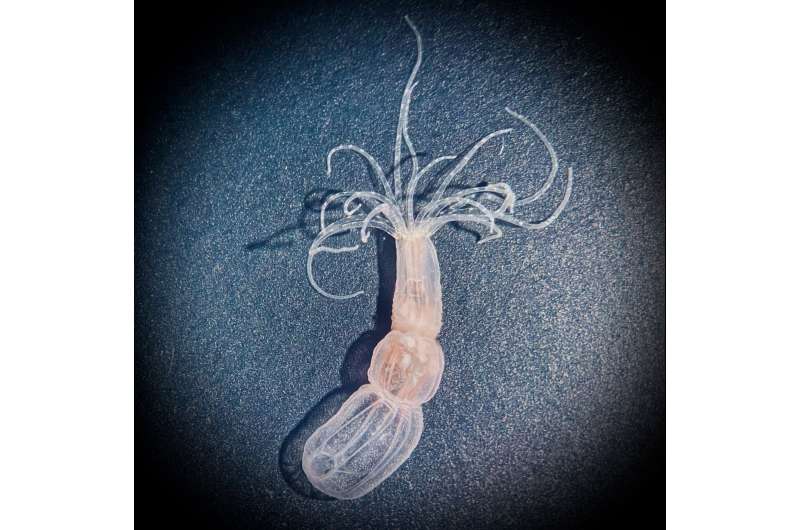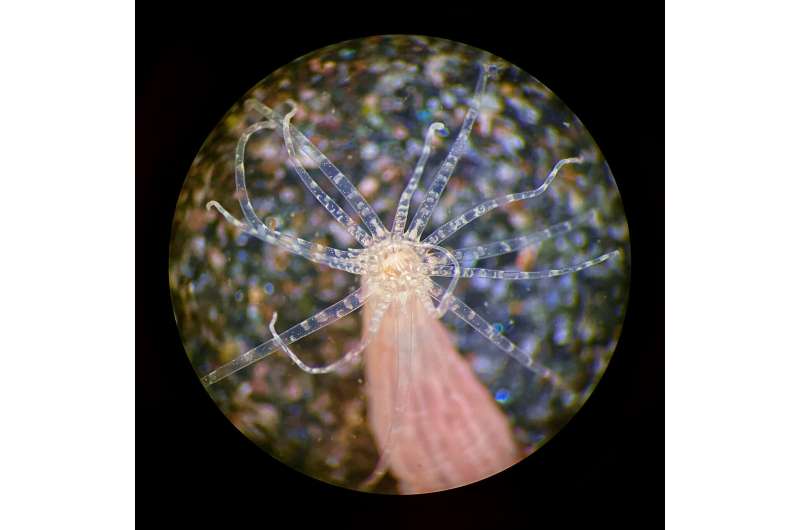April 3, 2023 report
This article has been reviewed according to Science X's editorial process and policies. Editors have highlighted the following attributes while ensuring the content's credibility:
fact-checked
peer-reviewed publication
trusted source
proofread
Starlet sea anemones found to be capable of associative learning

A trio of biologists, two with the University of Fribourg, in Switzerland, the third with Universitat de Barcelona, in Spain, has found that a type of Cnidaria is capable of associative learning. Gaelle Botton-Amiot, Simon Sprecher and Pedro Martinez published their study in the Proceedings of the National Academy of Sciences.
Associative learning was first reported by Ivan Pavlov, whose experiments with dogs showed they would salivate upon hearing a bell when trained with tasty treats. In humans, an example of associative learning is demonstrated by aversion to touching a hot stove. Such learning has two parts: memory and some sort of processing in response. Associative learning has been found in all sorts of creatures, but researchers have assumed that the minimum system requirement is a brain.
In this new effort, the researchers wondered if a brain was actually necessary. They note that creatures of the Cnidaria phylum do not have a brain. They have a network of nerves but no known organ that processes neural activity. To find out if such creatures are capable of associative learning, the researchers chose to focus on starlet sea anemones—sea creatures with organs that respond to light and retractable tentacles that respond to stimuli.

The research team collected several specimens and brought them into their lab for study. Each was subjected to a bright light and/or an electric shock. Some of the anemones were subjected to the light and the electric shock at the same time while others received them independent of timing.
Over time, the anemones that received the light and shock at the same time learned to associate them as a single event and responded in kind. This was demonstrated by turning on the light without applying the shock to observe whether the anemone would retract its tentacles anyway. The research team found that 72% of them did, showing that the creature was capable of remembering that shocks come with sudden bursts of light and then by responding as it normally would to a shock—by pulling in its tentacles.
More information: Gaelle Botton-Amiot et al, Associative learning in the cnidarian Nematostella vectensis, Proceedings of the National Academy of Sciences (2023). DOI: 10.1073/pnas.2220685120
Journal information: Proceedings of the National Academy of Sciences
© 2023 Science X Network





















